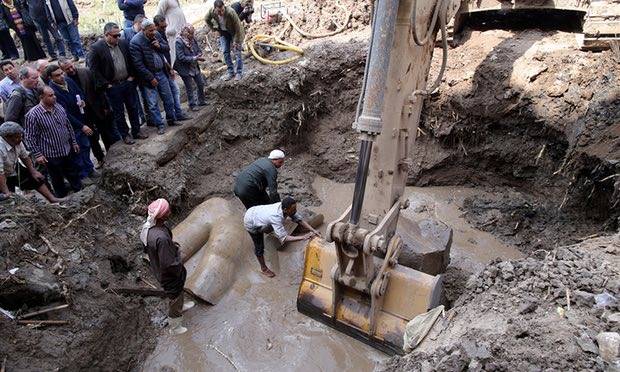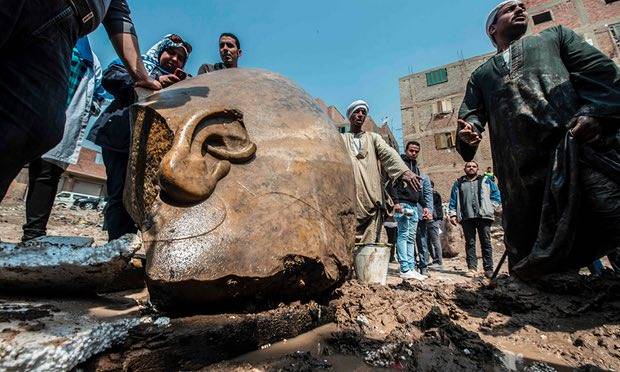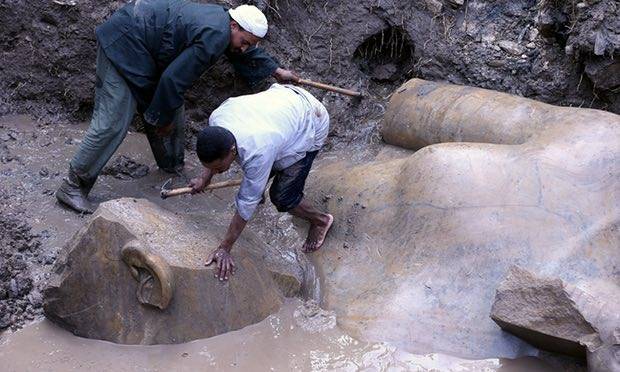Cairo (Web Desk): Archaeologists from Egypt and Germany have found an eight-metre (26ft) statue submerged in groundwater in a Cairo slum that they say probably depicts revered Pharaoh Ramses II, who ruled Egypt more than 3,000 years ago, The Guardian reported.
The discovery – hailed by Egypt’s antiquities ministry on Thursday as one of the most important ever – was made near the ruins of Ramses II’s temple in the ancient city of Heliopolis, located in the eastern part of modern-day Cairo.

“Last Tuesday they called me to announce the big discovery of a colossus of a king, most probably Ramses II, made out of quartzite,” the antiquities minister, Khaled al-Anani, said at the site of the discovery.
The pharaoh, also known as Ramses the Great or Ozymandias, was the third of the 19th dynasty of Egypt and ruled for 66 years, from 1279BC to 1213BC. He led several military expeditions and expanded the Egyptian empire to stretch from Syria in the east to Nubia (northern Sudan) in the south. His successors called him the Great Ancestor.
Percy Bysshe Shelley’s 1818 sonnet Ozymandias – which contained the line “Look on my works, ye Mighty, and despair!” – was written soon after the British Museum acquired a large fragment of a statue of Ramses II from the 13th century BC.

“We found the bust of the statue and the lower part of the head and now we removed the head and we found the crown and the right ear and a fragment of the right eye,” Anani said of the new discovery.
The joint Egyptian-German expedition also found the upper part of a life-sized limestone statue of Pharaoh Seti II, Ramses II’s grandson, measuring 80cm in length.
The sun temple in Heliopolis was founded by Ramses II, lending weight to the likelihood the statue is of him, archaeologists say. It was one of the largest temples in Egypt, almost double the size of Luxor’s Karnak, but was destroyed in Greco-Roman times.
Many of its obelisks were moved to Alexandria or to Europe and stones from the site were looted and used for building as Cairo developed.
Experts will now attempt to extract the remaining pieces of both statues before restoring them. If they are successful and the colossus is proven to depict Ramses II, it will be moved to the entrance of the Grand Egyptian Museum, set to open in Giza in 2018. The discovery was made in the working-class area of Matariya, among unfinished buildings and mud roads.


